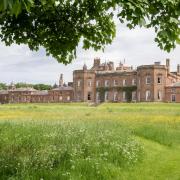The largely lowland character of the Caldew makes the river one of Cumbria’s most accessible. Indeed, for much of its length it is tracked by the Cumbria Way giving walkers continual access to its banks and riparian habitats.
The Caldew rises on the northern flanks of 931-metre high Skiddaw – the ‘Back O' Skidda’ – where a series of gills including Stile Gill and Slat Gil, and later Burdell Gill and White Gill, converge.
Its name is likely derived from ‘cold (cald) water (dwr)’ although ‘caled’ can also mean ‘hard’ which has also been taken to reflect fast flowing water or a stone river bed.

The Caldew runs east between Carrock Fell and Bowscale Fell to Mosedale where it takes a sharp turn north to reach the village of Millhouse. From here it travels below Hesket Newmarket in the Lake District National Park. This is an area of farmland, woodland and appealing villages, Hesket Newmarket being built around a traditional green with a market cross and a popular pub, The Old Crown, which is a cooperative owned by villagers and other supporters.
A little further north and the Caldew is boosted by Cald Beck which runs east out of Caldbeck village – being this close to another of the gems in Cumbria’s crown with so much to offer it is almost obligatory to visit.
Despite or perhaps because of its rural location, Caldbeck is a thriving place reflecting a history of activity in the area. Mining began in the nearby fells as early as the 13th century up until the heyday of the 17th century, with the last mine closing in the 1960s. The fells are rich in a variety of minerals, in particular lead, copper and barytes.
Industrial development continued into the 18th and 19th centuries with woollen mills, bobbin mills, corn mills, a paper mill and a brewery all contributing to a bustling centre that also provided a hub for outlying villages and farms, as it still does today.

The 12th century St Kentigern's Church is the resting place of the famous local huntsman, John Peel, about whom the song Do ye ken John Peel was written. Next to the church is Priests Mill, home to the Watermill Café, The Wool Clip cooperative and newest arrival, A Story of Home. Villager Sharon Lomas, who writes on biophilic interior design in Cumbria Life, has just opened her studio at the mill where she hosts consultations with clients interested in bringing design that is influenced and inspired by nature into their homes.
Customers travel long distances to visit The Wool Clip, which is a showcase for talented producers and makers of all things wool, while the Fairtrade shop opposite the church is a rare find in a village.
Along the road Midtown Milkhouse offers the chance to take home farm fresh milk and more, courtesy of the Hodgson family’s 250 pedigree Holstein cows.
RECOMMENDED READING
- A journey along the River Derwent in Cumbria
- A journey along the River Esk in Cumbria
- A journey along the River Kent in Cumbria
Back to the course of the Caldew and it is a pleasant walk through woodland to reach Sebergham (pronounced Sebram) and its grade II listed bridge, which dates from 1689.
Further on at Welton, Bell Bridge, which dated from 1772, collapsed after being damaged during Storm Desmond in 2015 and Storm Jonas in 2016. A £1.25m replacement, Bell Bridge, incorporating stone from its Georgian predecessor, was opened to the public in December 2017. The new bridge has resilience to future flooding built in with steel beams and a reinforced concrete deck with abutments and parapets clad in recovered masonry, all designed to maintain the authenticity of the original bridge while meeting modern design standards and being in keeping with the rural landscape.
By now walkers are well into 15.5-mile section of the Cumbria Way that tracks the river from Caldbeck to Carlisle.

The route runs below Rose Castle, former home of the Bishops of Carlisle for nearly 800 years and now home to the Rose Castle Foundation, which is committed to reconciliation and conflict resolution.
It passes independent Lime House School, which moved to Hawksdale in 1947 having been formally established in Wetheral in 1899, although documents have emerged that suggest it may have been 1865. The current grade II listed school building was originally a country house called Holme Hill. Most of the present building dates from the 19th century, but parts are earlier and two fireplaces are dated 1638.
The Caldew is joined by a tributary, the Roe, near Gaitsgill, before reaching Buckabank where it flows over a weir that provides a mill stream to Ellers Mill where Cowens is still producing cotton wool and other products after more than 200 years.

Flowing under Hawksdale Bridge and Dalston Bridge, the river enters Dalston and accompanies the green beneath White Bridge. Dalston is another vibrant Cumbrian village, popular for its rural character but very close to Carlisle, with easy access from its own railway station.
Dalston Hall, originally built as a pele tower around 1500 with a west wing added in 1556, was recently taken over by the Gilchrist Collection as a new wedding venue.
The hall had belonged to the Dalston family for many generations. During the siege of Carlisle during the English Civil War, Sir George Dalston was forced to flee when the hall was requisitioned as the headquarters of the Scottish Covenanters. It was Edmund Wright Stead who on acquiring it in 1897 transformed it into a mansion that was given a grade II* listing in 1984.
Meanwhile, the Caldew flows past the back side of Carlisle Racecourse and enters the city suburbs north of Cummersdale. Flowing over a weir in Denton Holme, the rural start of the river is now a distant memory as its urban character takes over.
The river continues through the city beneath West Walls then skirts around Carlisle Castle before joining the river Eden close to the Sheepmount Athletics Stadium opposite Stanwix.

Unfortunately, the Caldew has contributed to some of the major floods seen in Carlisle since 2010. Researchers say straightening, deepening and embanking was common along the river between 2005 and 2016, which seemed to send sediment downstream towards the city. Widening the channel through Carlisle only increased sediment built-up, creating a shallower channel that was prone to overflowing, according to Neil Entwhistle, writing in Smart Water Magazine.
Relaxing river maintenance outside the city has seen it return to a more natural state, locking up sediment upstream and creating a wandering channel system and a variety of habitats.
He writes: “There are gravel bars, deep pools, floodplain wetlands, ponds and river cliffs. This diversity provides greater spawning habitat for fish, and cooler refuges for their fry. The open water habitats benefit amphibians, the trees and shrubs help kingfisher hunt and sand martins can nest in the river cliffs. Beetles and spiders scurry in the shingle, earning this wilder stretch of the Caldew a designation as a Site of Special Scientific Interest.”

Things to do along the River Caldew in Cumbria
PHOTO OP – Plenty of pretty vistas along woodland walks then it is the major sights of Carlisle the castle, cathedral and Abbey Street. If you have been walking the Cumbria Way then sign the log book at the tourist information centre in the Old Town Hall to mark your completion of the route.
PIT STOP – The Crown Inn, Hesket Newmarket, a friendly, community-owned pub next to Cumbria’s oldest surviving micro-brewery; Muddy Duck takeaway, Oddfellows Arms and Watermill Café, all Caldbeck; Bridge End Inn, Dalston; The Old Bank, Alexandros, Casa Romano, all Carlisle.
TOP SHOP – Hesta Scene, a stylish collection of homeware and gifts in Caldbeck; Village Stores, Caldbeck, where local is the order of the day in fresh fruit and vegetables, meats/fish, spirits, tray bakes and coffee, as well as gifts – and it even has a petrol pump; Suziebou, Catherine Paige Bridal and Carrock Meats, in Dalston; Castle Chocolates and Bookends, Carlisle.
HOT SPOT – Priest’s Mill, Caldbeck; Carlisle Cathedral.
FAMILY STOP – Hesket Newmarket Show on August 31 from 9am; walk the riverside path from Caldbeck to the Howk, a limestone gorge with waterfalls and a ruined bobbin mill, whose three-feet wide and 42-feet diameter waterwheel is said to have been the biggest in the country; Carlisle Castle.
AND FLOP – Eliza’s Cottage, Caldbeck; Dandelion and Hoglet cottages, Dalston; The Halston, in Carlisle.





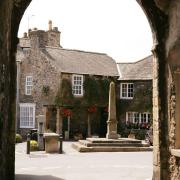




![Hampsfell [visitcumbria.com]](/resources/images/128x89/1x/18466935.jpg)
![Hampsfell [visitcumbria.com]](/resources/images/180x180/1x/18466935.jpg)

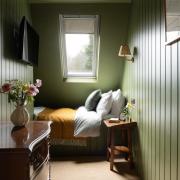

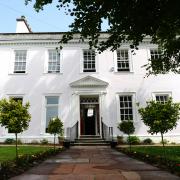

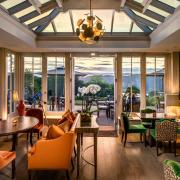

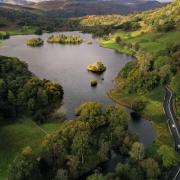

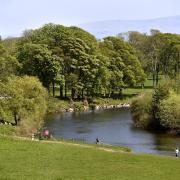

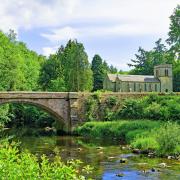
![Kirkby Lonsdale is a popular area for cycling as well as walking [Cumbria Tourism/Carlos Reina]](/resources/images/128x89/1x/18096705.jpg)
![Kirkby Lonsdale is a popular area for cycling as well as walking [Cumbria Tourism/Carlos Reina]](/resources/images/180x180/1x/18096705.jpg)

